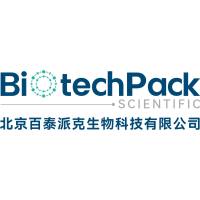Protocol for Protein Extraction
互联网
Protocol for Protein Extraction
10 % w/v TCA/ acetone/ 0.07 % v/v -Mercaptoethanol
Plant cells are rich in compounds that interfere with the 2DE separation method such as salts, organic acids, phenolics, pigments, terpenes, among others. A common protocol used in our lab for extraction proteins from plant tissues consists in the homogenization of mortar-grounded material in liquid nitrogen with an extraction buffer (20 mM Tris-HCl, pH 8.0, 5 mM EDTA, 50 M leupeptin, 1 M pepstatin A, 10 M 3, 4-dichloroisocumarine, 1 mM phenylmethylsulfonyl fluoride and 0.05 % SDS). Although, proteins extracted following this protocol produce good SDS-PAGE separations they are not suitable for 2DE. Therefore, we adopted the widly applied (see references) protocol developed by Damerval and introduced some modifications. We were able to generate 2DE separations with superior resolution and recovery from various plant parts. Moreover, we tested this method to prepare and separte proteins from mycelium of the filamentous fungus Aspergillus nidulans with great success.
Protocol
- Ground tissue in a mortar with liquid nitrogen. Collect grounded material in a eppendorff tube (tube weight 1.0 g).
- Weight the material
- Add 10 % w/v trichloroacetic acid and 0.07 % v/v 2-mercaptoethanol in COLD (-20 C) acetone (approx. 1ml for 0.3 g of tissue
- Incubate for 2 hs at -20C (Other protocols leave it over night at -20 C)
- Centrifuge the precipitated proteins in microfuge for 15-20 min. at 14,000 rpm
- Wash pellet with COLD acetone containing 0.07 % v/v 2-mercaptoethanol
- (approx. 1 ml) to remove pigments and lipids until the pellet is colorless.
- Dry proteins under vacuum (5- 10 min.)
- Resuspend proteins in the appropriate rehydration buffer
- Sonicate to extract proteins in a water-bath sonicator, 15-30 min.
-
Centrifuge and collect the supernatant containing predominantly soluble
proteins.
For a liquid sample (such a plasma, lysides or a grounded tissue
resuspended in a buffer) add 4 vol. of the 10 % w/v trichloroacetic acid
and 0.07 % v/v 2-mercaptoethanol in acetone and start at step 4.
References
Damerval C, de Vienne D, Zivy M, Thiellement H. The technical improvements in two-dimensional electrophoresis increase the level of genetic variation detected in wheat-seedling proteins. Electrophoresis 1986;7:52-54.
Porubleva L, Velden KV, Kothari S, Oliver DJ, Chitnis PR. The proteome of maize leaves: Use of gene sequences and expressed sequence tag data for identification of proteins with peptide mass fingerprints. Electrophoresis 2001;22:1724-1738.
Santoni V, Bellini C, Caboche M. Use of two-dimensional protein-pattern analysis for the characterization of Arabidopsis thaliana mutants. Planta 1994;192:557-566
<center> <p> </p> </center>上一篇:Purifying Protein from Inclusion Bodies 下一篇:Taq Polymerase Purification







